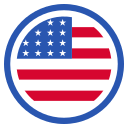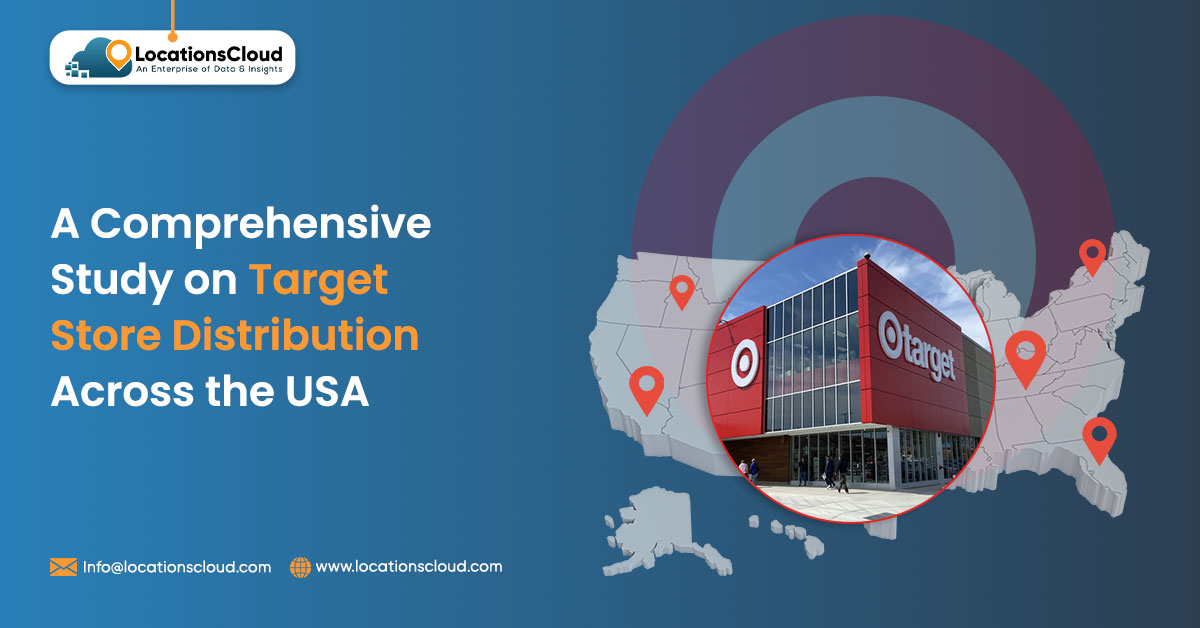
The company was established in early 1902. It was initially based in Minneapolis and was owned by George Dayton. This organization expanded its operation branch over the years and was also involved in acquisitions. Initially, the first store that became the basis for the Target Corporation was launched in 1962. Four years later, in 1973, it became Dayton-Hudson Corporation after it merged with J. L. Hudson Company in 1969. It operated many department store chains, including Dayton, Hudson, Marshall Fields, and Mervyn. The parent company was earlier known as Dayton Hudson Corporation until 2000. Despite the name and even logo, which are similar to those of Target Australia, they are not part of it.
Target Corp is a company based in the United States that started as a discount store chain and evolved into a general merchandise store under the name Target, which is a hypermarket chain. It is based in Minneapolis, Minnesota, and is the 7th largest retailing enterprise in the United States and a component of the S&P 500 index. Target is also amongst the largest private employers owned by Americans in the United States of America.
Major Focus and Product Offerings
The company’s name and logo are connected with the center of a shooting target, which speaks about concentration and accuracy. This idea of hitting the bull’s eye for a target corresponds well with Target’s vision of providing good products at an affordable price. Bullseye is the company’s popular icon, usually portrayed in television commercials and campaigns and used in stores. Target is thus recognized for providing fashionable, trendy merchandise at cheap prices. The company’s product range is broad, covering various categories:
Clothing
Clothing is one of Target’s most diverse stocks. They stock clothes for male and female adults and kids. Sometimes, they have extended designer lines and proprietary lines.
Household Goods
These range from furniture and home accessories to kitchenware and cleaning products in the stores.
Electronics
Customers can buy fashionable tech products, including smartphones, laptops, TVs, home entertainment systems, and other electronics.
Toys
Target toys are available by brand, including educational toys. Where you’ll find Target-exclusive toys and games.
Groceries
Almost all stores have grocery aisles, where you can buy fresh vegetables and fruits, dairy products, meats, and canned and bagged foods.
Expansion and Operations of Target Store
This capabilities growth in the late 20th century enabled Target to become a go-to retailer in America. The company has a substantial infrastructure to support its operations, including:
- 41 Distribution Centers: These are critical to getting the products to the stores as quickly as possible.
- Financial Services: This division issues and manages a range of economic goods and services, such as the Target RedCard, which gives customers voucher codes and other privileges.
- Global Capabilities Center in Bangalore, India: This center deals with matters concerning technology and business, and Target can strengthen its operations through its competence.
- Two Criminal Forensics Laboratories: Unlike similar retail companies, these laboratories assist the overarching Target company in loss prevention/ security, emphasizing theft and fraud.
Top Competitors of Target Retail Store
Target competes directly with several major retail players, including Walmart, Amazon, eBay, Costco, Home Depot, Kohl’s, T. J. Maxx, and Macy’s. From the following analysis, it can be seen that Walmart and Amazon represent a formidable challenge because they have large-scale stores and are closely related to the physical and online shopping markets. eBay is a good selling platform, but it is an online marketplace, while Costco has a bulk buying facility for members. Home Depot is in the home improvement products category, whereas Kohl’s and T. J. Maxx offers a solid match for apparel and home goods. Target also has head-on competition in most categories with Macy’s, mainly because Macy’s is a department store atmosphere kind of store. Each of these competitors comes with strengths that put pressure on Target to strive to make necessary breakthroughs in product offering, product pricing, customer service, and extra innovative approaches that help it further hold or expand its market share.
Target Stores Location Distribution Strategy
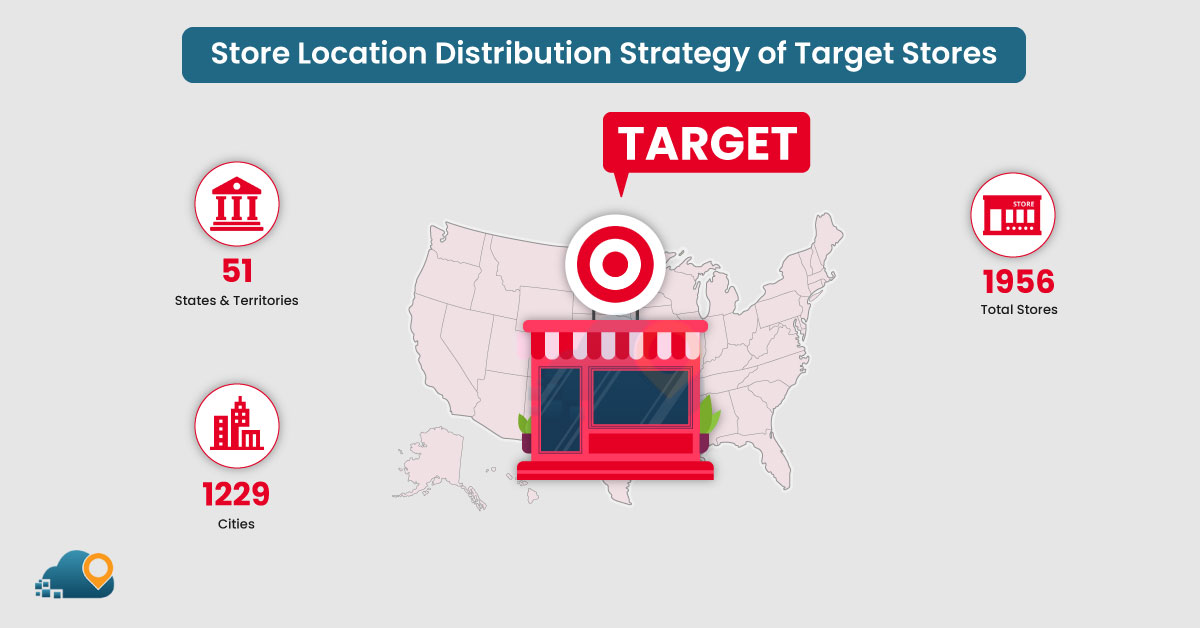
Target’s distribution strategy ensures that customers across these states have access to its diverse range of products, including clothing, household items, electronics, toys, and groceries. Each store location is carefully selected to meet local demand and preferences, reinforcing Target’s position as a leading retailer in the United States.
Target Corporation, simply known as Target, is among the largest supermarket giants in the United States of America. Data obtained from the most recent analysis indicates that there are currently 1,956 Target stores in the United States. These stores are located in 51 states and territories, the 50 states of the US plus the District of Columbia. This network of stores covers a vast reach that extends to 1229 cities across the country.
Target has stores in the United States and in other countries and thus has immense influence. In the U. S. alone, 59 supply chain facilities enshrine the delivery and distribution of the products to the stores and customers. At present, Target Group operates its corporate activities from Minnesota, and it has two massive centers at Minneapolis and Brooklyn Park. Further, eight other offices are located in different parts of the country to attend to other organizational needs of the business.
Target’s exposure is very widespread, specifically in the global arena. The global capabilities center is in Bengaluru, India, which plays an important part in the organization. Target also has nearly 20 sourcing offices worldwide, acting as sourcing agents of the supply chain. This is worth mentioning, given that Target Corporation does not have stores in Australia, as Target Australia is a different company.
Target offers various goods categorized into different sections, such as clothes, electronics, food, particulars, and others. It has offered it as a discounter, which is a little more classy compared to the other counter discount chains. The Target stores are big and small in size and category. There are what are called ‘SuperTarget’ shops, which are complete with large food markets and areas for household products. On the other hand, there are small ‘CityTarget’ and ‘Target Express’ shops in urban areas.
This distribution map proves the company’s importance in the United States retail industry and its ability to provide shopping facilities for millions of people. The level of evolution and diversification of Target stores remains high due to updates in the modern world and the desire of purchasing managers to offer different kinds of stores to consumers.
List of States and Territories With Most Target Stores
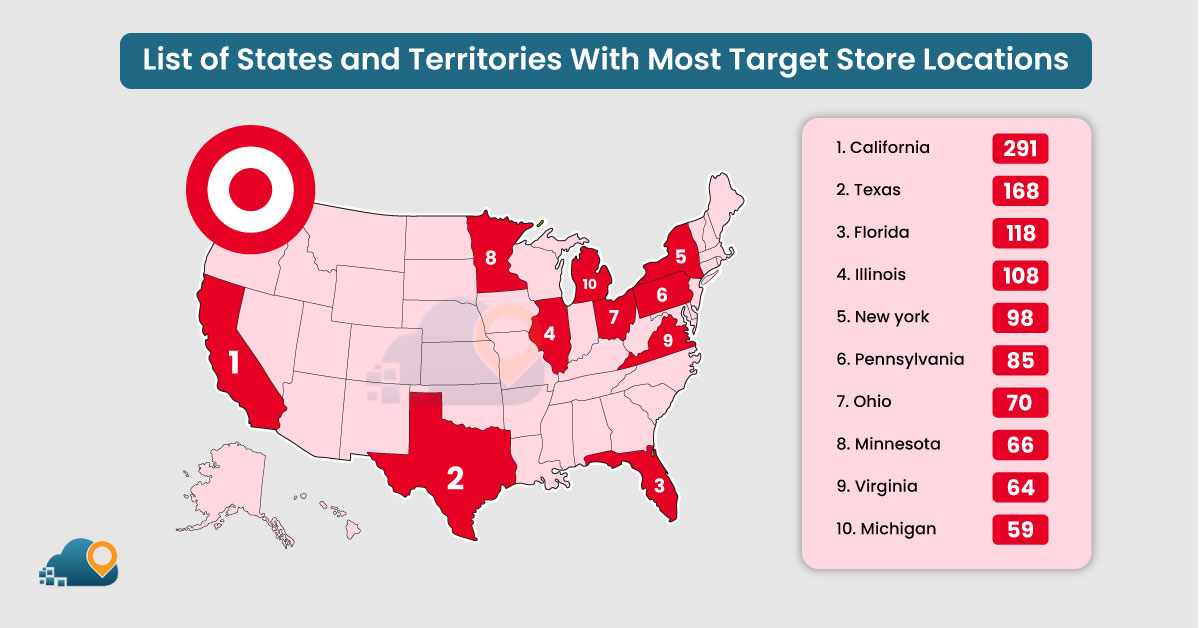
The states with more outlets point out that Target has chosen the areas of concentration in the most populated segments of the United States market. The most significant number of the stores are in California, where there are 291 Target stores; this is attributed to 15% of the total number of Target stores in the US. This roughly translates to 7 stores per million people, a single store catering for every 135,773 people. This could be attributed to the fact that California hosts a considerable population and many sub-regions. Thus, Target wants to make its stores easily accessible to many people.
Texas is the second, with 168 Target stores owning 9% of the total number in the country. This comes to approximately six stores for every million people, each catering to 172,619 persons. Large geographical areas of Texas and other large cities, including Houston, Dallas, and Austin, have more locations. This distribution of stores makes it easy for Target to cover all corners of the state and serve all classes of people, including city workers, suburban homeowners, and many others.
Target currently hosts 118 stores in the Florida region, which occupies 6% of all stores in the United States of America. The statutory retail outlets are scarce in the state, with an average of 5 outlets for every million people, while each of the outlets caters to 182,034 people on average. Florida’s population concentration, especially in urban centers like Miami, Orlando, and Tampa, makes the state suitable for Target. The stores are located in areas that will benefit the state inhabitants and visitors who flock to the state in large numbers.
Target has only 98 stores in New York, representing 5% of the total number across the country. Like the Florida region, New York hosts 5 stores per one million citizens/members, and each store is expected to accommodate 198469 people. The densely populated cities of New York, coupled with suburban regions, give Target sufficient access to the community, especially in areas of New York City, Buffalo, and Rochester.
Target has stores in 47 states in America, including 108 in Illinois, which is 6% of the total number of Target stores in the country. With a population of 12.67 million inhabitants, one Target store corresponds to 117 315 inhabitants, which amounts to about nine stores per one million inhabitants.
Pennsylvania hosts 85 Target stores, making up 4% of the US. The state’s population of 12.80 million means there is one Target store for every 150,588 people or about 7 stores per 1 million residents. Target’s presence is well-distributed across Pennsylvania’s urban and suburban regions.
In the north-central region, Minnesota has 66 stores, or 3% of the total number of stores across the country; this is the region that hosts Target’s headquarters. Santorini’s total population comprises 5 64 million. Therefore, there is one Target store for every 85,455 people, giving about 12 Target stores per one million people. This high density reflects Target’s strong market presence in its home state.
Ohio features 70 Target stores, contributing to 4% of the total number of stores in the US. The state has a population of 11. 69 million is equal to 1 Target store per 167000 inhabitants, or 6 outlets per 1 million residents. This distribution also demonstrates where Target is well positioned to meet the needs of Ohio’s populace.
There are a total of 1408 Target stores in the United States. Virginia has 64 stores, which are only 3% of the total. With a population of 8. 54 million, there is one Target store for every 133,438 people and, on average, 7 stores for 1 million people. The stores are well located in that they cover both the urban and suburban markets.
Out of 1,780 Targets in the United States, Michigan is home to 3% or 59 stores. The state’s population of 9.99 million means there is one Target store for every 169,322 people or about 6 stores per 1 million residents.
These figures also illustrate the correct positioning of Target and its stores in demographic locations of overpopulation, which makes the stores easily accessible to the population.
Cities with the Most Target Store Locations in the United States
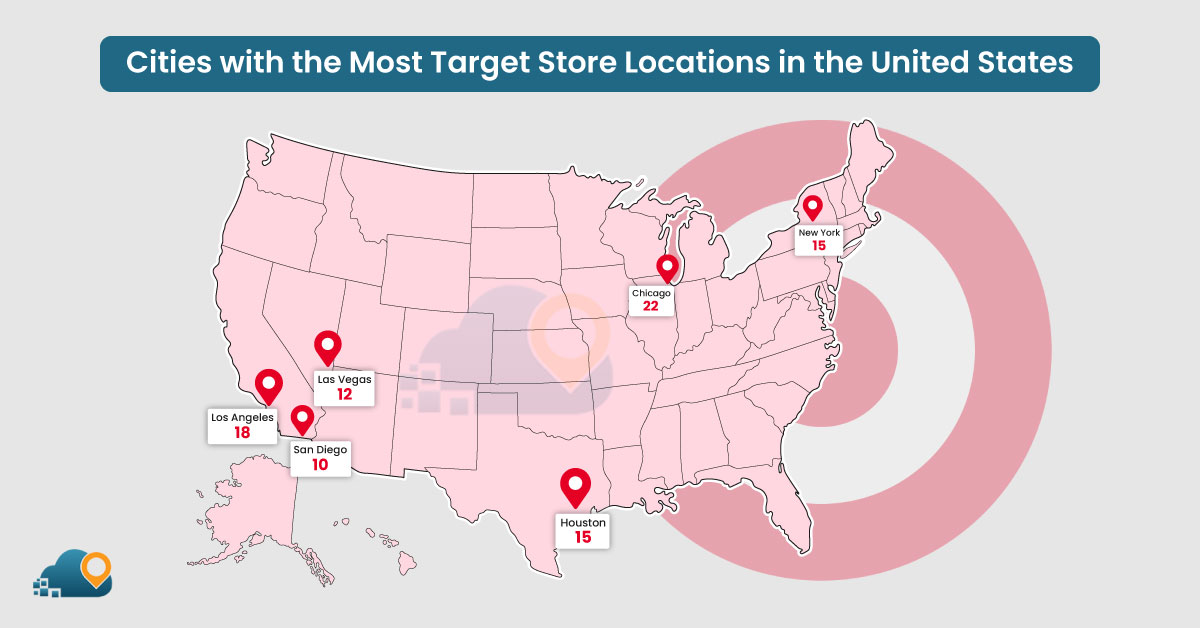
The layout of Target stores in these cities reveals the company’s long-term plan to establish its outlets where customers are most likely to patronize them in large quantities in the United States of America. Every city has peculiarities that Target successfully meets to remain an essential player in the market.
The fact that Target has most of its stores in the United States most populated areas shows that the company aims to make it easy for as many people as possible to access its products.
Chicago, Illinois, leads with 22 Target stores, making it the top city for Target locations among the big box stores analyzed in this research. Chicago’s size, diverse population demographics, availability, and well-organized public transportation system make it an ideal market for multiple Target stores. The high concentration of stores enables Target to cater to the varied needs of both urban and suburban residents in the city.
In second place is Los Angeles, California, with 18 Target branches. As one of the largest cities by metropolitan area and population, Los Angeles features many Targets scattered throughout the city and its neighboring areas. These stores provide essential shopping facilities for all societal classes, from the working class in the urban core to those in the outskirts of various neighborhoods, ensuring comprehensive access to goods and services. Houston, Texas, is home to 15 Target stores, reflecting its status as one of the largest and most rapidly developing cities in the USA. The city’s size and diverse population create a substantial demand for more Target outlets. These stores also meet the needs of the populated and diverse city of Houston ranging from clothing to food products and other miscellaneous goods.
Specifically, New York is home to 13 target stores, which ensures they cover the highly compressed population density in the area. New York’s unique population structure, characterized by new high-rises and densely populated neighborhoods, necessitates smaller store formats. This demonstrates Target’s ability to adapt to different environments, effectively catering to the urban space of New York City.
Las Vegas, Nevada, has 12 Target stores, accommodating both the city’s residents and the numerous tourists who frequent the area. The economic diversity and residential nature of Las Vegas ensure that Target’s stores are well-placed to provide convenient shopping options for all. San Jose, California, also features 12 Target stores, strategically positioned to appeal to Silicon Valley’s tech-savvy consumers. With a population comprising primarily families and individuals, San Jose requires easily accessible retail outlets, which these multiple Target stores fulfill effectively.
San Antonio, Texas, has 10 Target locations that meet the needs of its customers by providing goods to both densely populated areas and large suburbs. The city’s cultural diversification and significant population make it an ideal market for Target’s extensive product assortment. Austin, Texas, known for its multicultural population and rapid growth, hosts ten Target outlets. These stores cater to a diverse customer base, including students, business entities, and families, offering products that fit the specific needs of these groups.
San Diego, California, with its 10 Target stores, serves coastal areas and other neighborhoods. The city’s large military presence and vibrant tourism industry create a demand for multiple Target locations to ensure convenient access for all. Finally, Phoenix, Arizona, rounds out the list with nine Target stores. Despite having fewer stores, they are evenly distributed across the large metropolitan area. The hot climate and significant population drive a high demand for accessible retail space, which Target meets by strategically opening stores throughout the city.
This high store density indicates a strong presence in the state, particularly in urban areas like Chicago.
States & Territories Without Target Store Locations
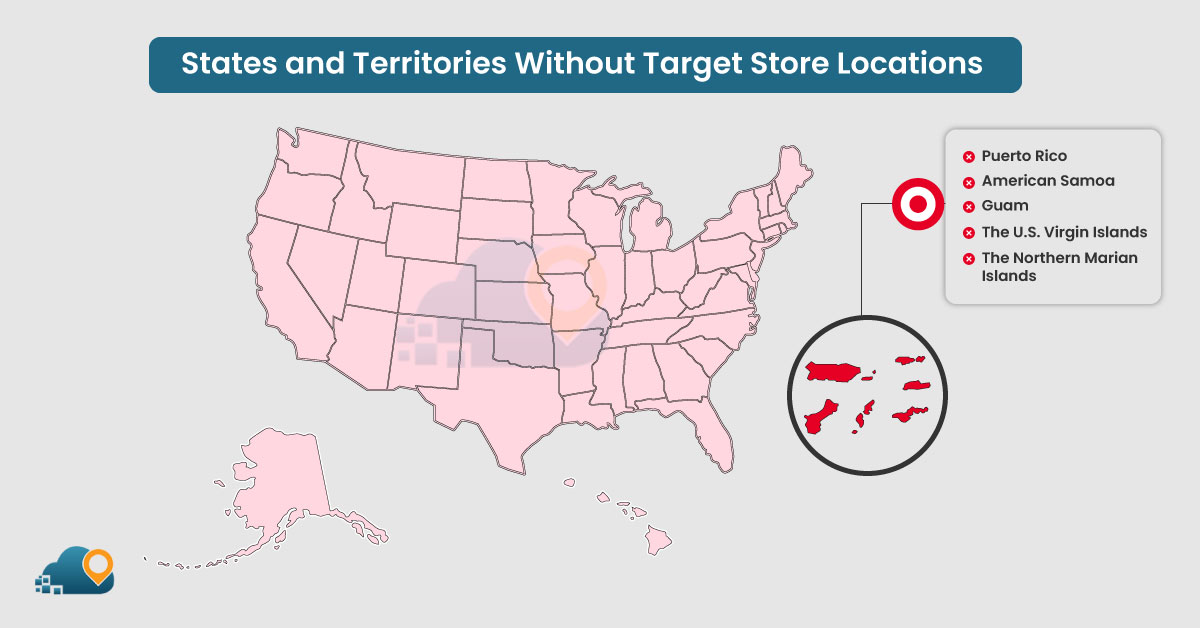
There are five states and territories in the United States that do not have any Target stores, including the federal territories of Puerto Rico, American Samoa, Guam, the US Virgin Islands, and the Northern Mariana Islands. Although Target has presented itself as an organization with stores in almost every mainland state, these areas still lack a Target store.
It was observed that Puerto Rico didn’t have Target stores, although the island is relatively large and economically active. Logistics issues, shipping costs, and possible issues in the supply chain could also be the reason for the absence. Local competition and market best practices could also be responsible for the lack of Target stores in Puerto Rico.
The places included are American Samoa, Guam, the U.S Virgin Islands, and the Northern Mariana Islands; these places are located in the Pacific and Caribbean regions, and they explain why they can have some blown logistics situations concerning retail entities. The challenges facing store development are the distance from the mainland, higher transportation costs, and the inability to maintain a constant supply of goods on these islands, which affect big chain stores like Target. Further, Walmart has noticed that these territories possess substantially less consumer base and density, which may not be sufficient to generate the needed capital and recurrent expenditures for opening and maintaining Target stores.
Target does not have stores in these territories, which indicates that the company directs its operations where it can get the best output, in this case, high returns on investment. On the other hand, it has its downside in that it also opens up the possibility of Target searching for new regions to grow in and possibly increase its presence in the future. Given that Target is a growing and dynamic firm, it might be possible to take advantage of these under-developed regions to expand its market share and penetrate more into the market.
Conclusion
Target is currently ranked the 7th most prominent department store chain in the U.S. Its strategy is to provide quality products at reasonable prices, focusing on customer satisfaction and embracing cultural sensitivity, including equality for everyone and financial stability. However, Target currently controls about 5% market share in the United States. It can be at risk against the strong competitors of Walmart, Costco, and Amazon, and it can also be threatened by high potential substitutes and new entrants to the industry. For this reason, the following are some of the significant strategies that Target needs to implement to continue to compete effectively.
Firstly, it is about increasing its presence throughout the United States and entering foreign markets. Thus, this expansion improves its customer base and ensures it has a more diverse revenue generation method; hence, it doesn’t rely on one market segment. Secondly, increased internet use also requires strengthening the e-commerce department and efficiently using advanced technologies to influence online shopping perception.
Moreover, based on its price position, Target can increase the number of its suppliers to make cost savings, which would translate to lower consumer prices. Finally, expanding the offering by including a greater variety of items that are necessary in people’s day-to-day lives can enhance the company’s position and satisfy various customer needs.
Thus, by targeting these critical areas of market presence extension, e-commerce strengthening, optimization of supplier relations management, and enhancing product offerings, Target can strengthen its retail position and effectively address significant competitors and fluctuations in the industry environment.


